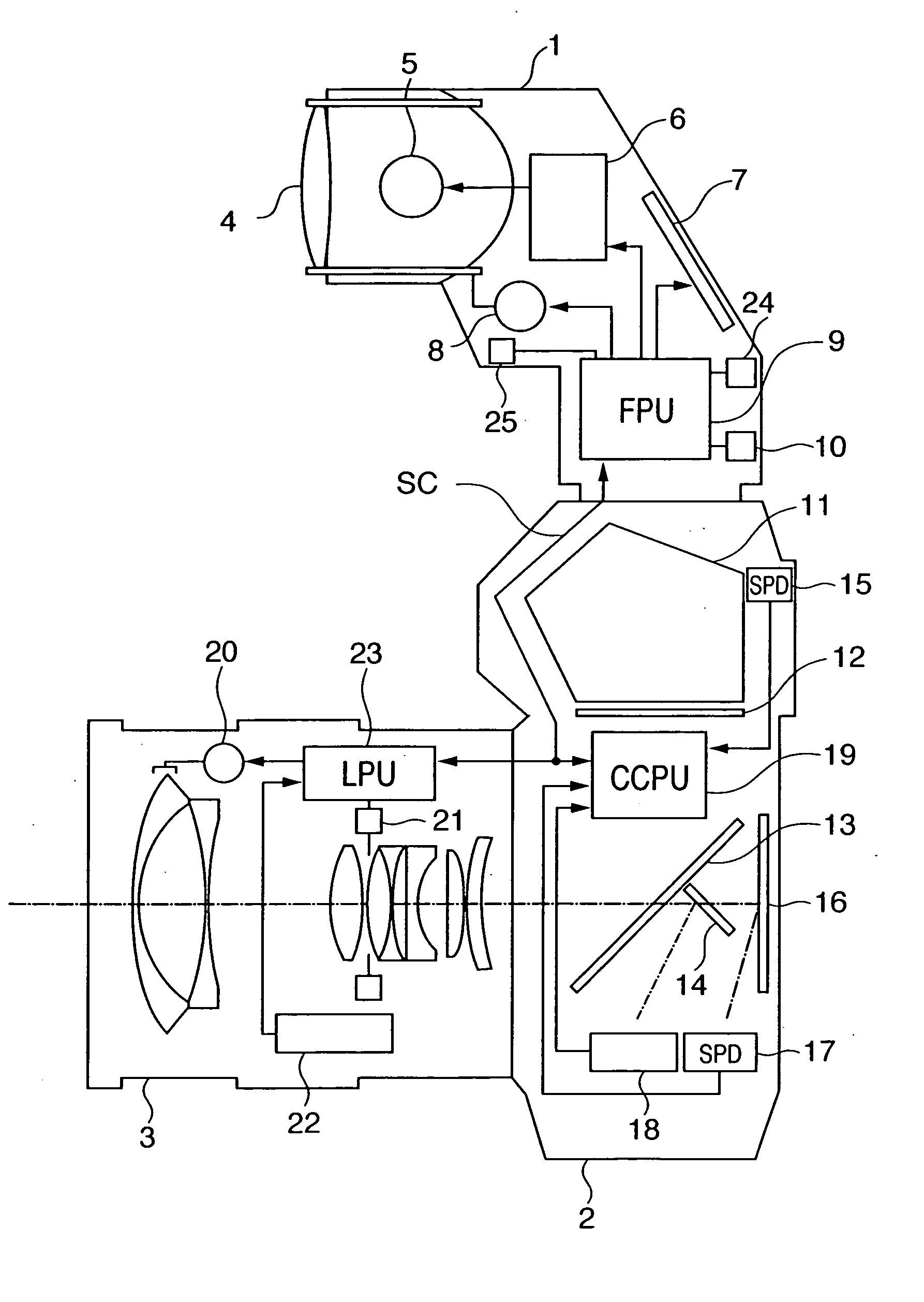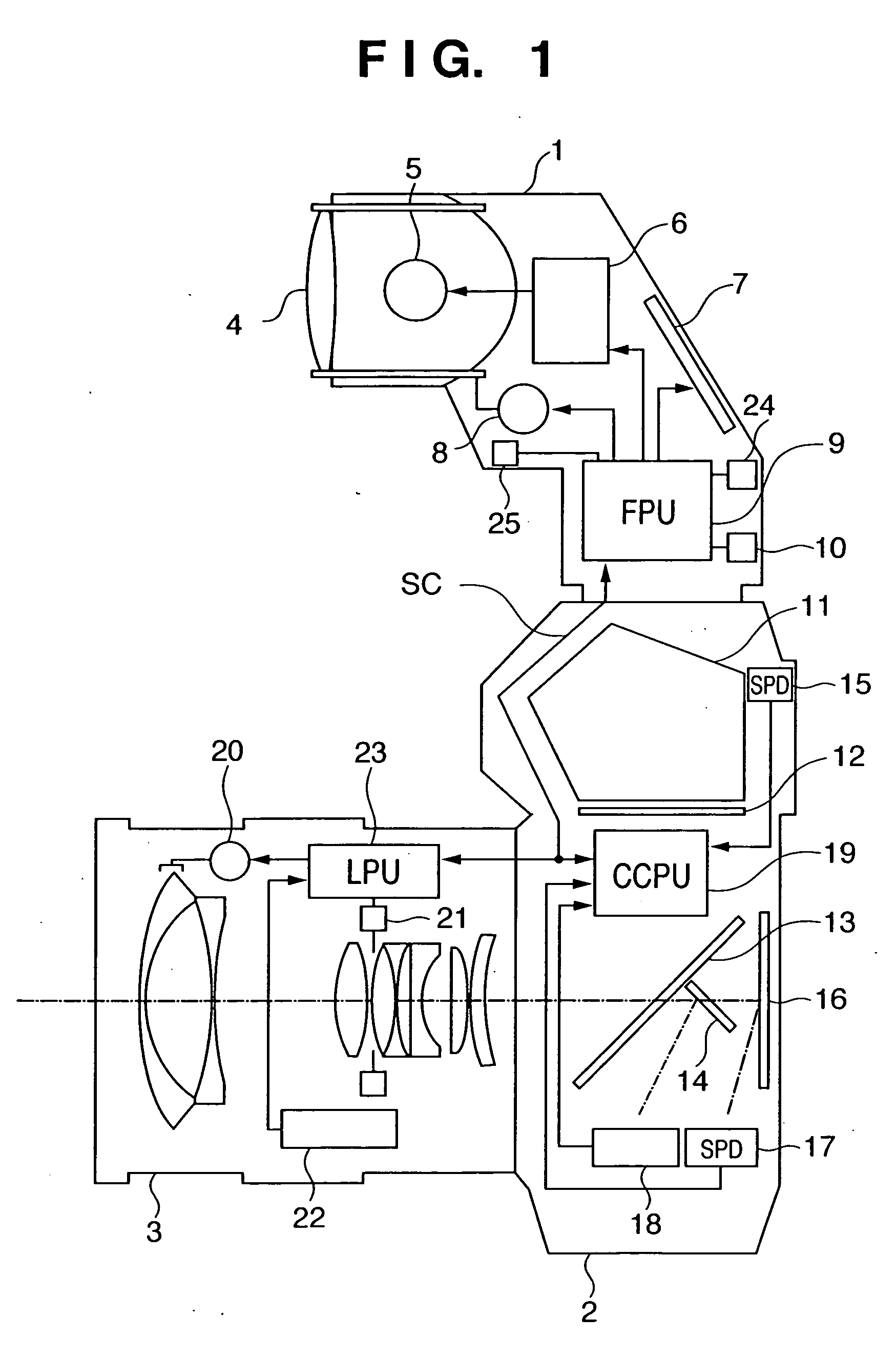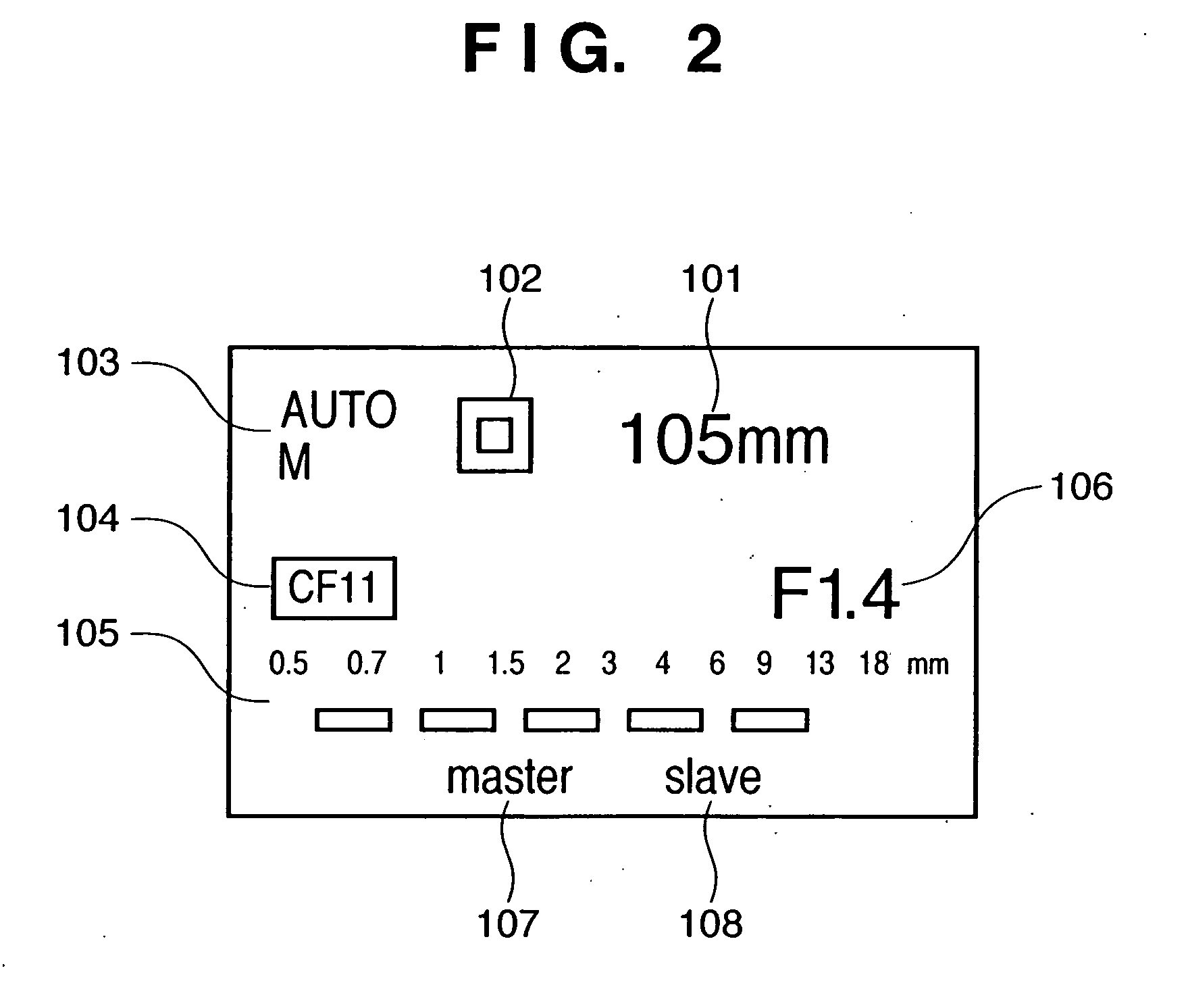Camera system, stroboscopic device, methods of controlling the camera system and stroboscopic device, program, and storage medium
a technology of stroboscopic device and camera system, which is applied in the field of camera system, stroboscopic device, methods of controlling the camera system and stroboscopic device, program, and storage medium, can solve the problems of complex mechanism, complicated conversion process of focal length and image size into light distribution angle performed by stroboscopic device arithmetic processing, etc., to achieve accurate display of set information of camera
- Summary
- Abstract
- Description
- Claims
- Application Information
AI Technical Summary
Benefits of technology
Problems solved by technology
Method used
Image
Examples
first embodiment
[0084] The operation of the FPU 9 of the first embodiment will be described below with reference to a flowchart shown in FIG. 5A.
[0085] When the power switch (not shown) is turned on to make the FPU 9 operable, the FPU 9 starts a predetermined operation from step S101. [0086] [Step S101] The FPU 9 initializes its own memory and ports. As will be described later, as the aperture size information (magnification information) and the focal length information of the lens to be acquired from the CCPU 19 and stored in its own memory, the FPU 9 stores default values, e.g., ×1 of the 135 size as the aperture size information, and 50 mm as the focal length information of the lens. [0087] [Step S102] The FPU 9 prepares for light emission by allowing the boosting circuit 6 to start operating. [0088] [Step S103 (information input unit / step)] The FPU 9 checks whether the focal length information of the photographing lens is acquired from the CCPU 19 via the communication line SC. If the focal le...
second embodiment
[0116] In the second embodiment explained below, a photographer can select, by a custom function (CF), a first mode in which the irradiation angle of irradiating light of strobe light is controlled on the basis of the photographing lens focal length information and aperture size information acquired from the camera, and a second mode in which the irradiation angle of strobe light is controlled on the basis of only the focal length information.
[0117] The same reference numerals as in the flowchart of FIG. 5A denote steps having the same operations in FIG. 5B, and an explanation thereof will be omitted.
[0118]FIG. 5B differs from the flowchart shown in FIG. 5A in that step S119 is added between steps S106 and S107. [0119] [Step S106] The FPU 9 checks whether the aperture size information (magnification information) of the camera is transmitted from the CCPU 19 via the communication line SC. If the aperture size information (magnification information) of the camera is transmitted, the...
third embodiment
[0129] In the third embodiment described below, it is possible to select a normal mode in which the irradiation angle of strobe light is set to an optimum value on the basis of the photographing lens focal length information and camera aperture size information input from the camera, and a slave mode in which light emission is controlled on the basis of a command from the master strobe. In the slave mode, the strobe light is set at a predetermined irradiation angle by inhibiting the normal mode.
[0130] The same reference numerals as in the flowchart of FIG. 5A denote steps having the same operations in FIG. 6A, and an explanation thereof will be omitted.
[0131]FIG. 6A differs from FIG. 5A in that steps S120 and S121 are added. [0132] [Step S120 (control unit / step)] The FPU 9 determines whether the switch WSLSW shown in FIG. 7 is turned on to set the wireless slave mode. In the normal mode in which the switch WSLSW is OFF, the flow advances to step S107. In the wireless slave mode in...
PUM
 Login to View More
Login to View More Abstract
Description
Claims
Application Information
 Login to View More
Login to View More - R&D
- Intellectual Property
- Life Sciences
- Materials
- Tech Scout
- Unparalleled Data Quality
- Higher Quality Content
- 60% Fewer Hallucinations
Browse by: Latest US Patents, China's latest patents, Technical Efficacy Thesaurus, Application Domain, Technology Topic, Popular Technical Reports.
© 2025 PatSnap. All rights reserved.Legal|Privacy policy|Modern Slavery Act Transparency Statement|Sitemap|About US| Contact US: help@patsnap.com



